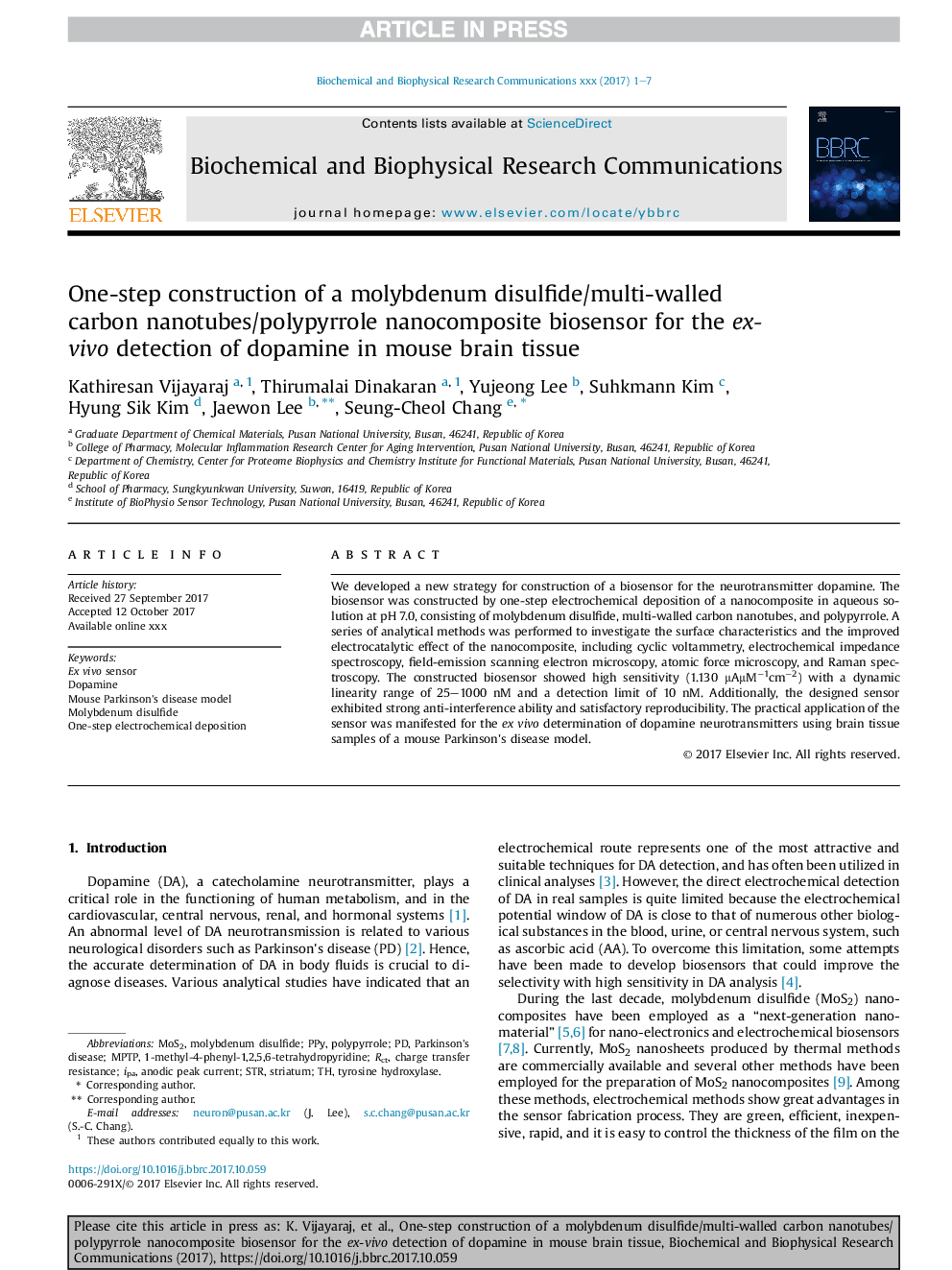| Article ID | Journal | Published Year | Pages | File Type |
|---|---|---|---|---|
| 8295953 | Biochemical and Biophysical Research Communications | 2017 | 7 Pages |
Abstract
We developed a new strategy for construction of a biosensor for the neurotransmitter dopamine. The biosensor was constructed by one-step electrochemical deposition of a nanocomposite in aqueous solution at pH 7.0, consisting of molybdenum disulfide, multi-walled carbon nanotubes, and polypyrrole. A series of analytical methods was performed to investigate the surface characteristics and the improved electrocatalytic effect of the nanocomposite, including cyclic voltammetry, electrochemical impedance spectroscopy, field-emission scanning electron microscopy, atomic force microscopy, and Raman spectroscopy. The constructed biosensor showed high sensitivity (1.130 μAμMâ1cmâ2) with a dynamic linearity range of 25-1000 nM and a detection limit of 10 nM. Additionally, the designed sensor exhibited strong anti-interference ability and satisfactory reproducibility. The practical application of the sensor was manifested for the ex vivo determination of dopamine neurotransmitters using brain tissue samples of a mouse Parkinson's disease model.
Keywords
Related Topics
Life Sciences
Biochemistry, Genetics and Molecular Biology
Biochemistry
Authors
Kathiresan Vijayaraj, Thirumalai Dinakaran, Yujeong Lee, Suhkmann Kim, Hyung Sik Kim, Jaewon Lee, Seung-Cheol Chang,
